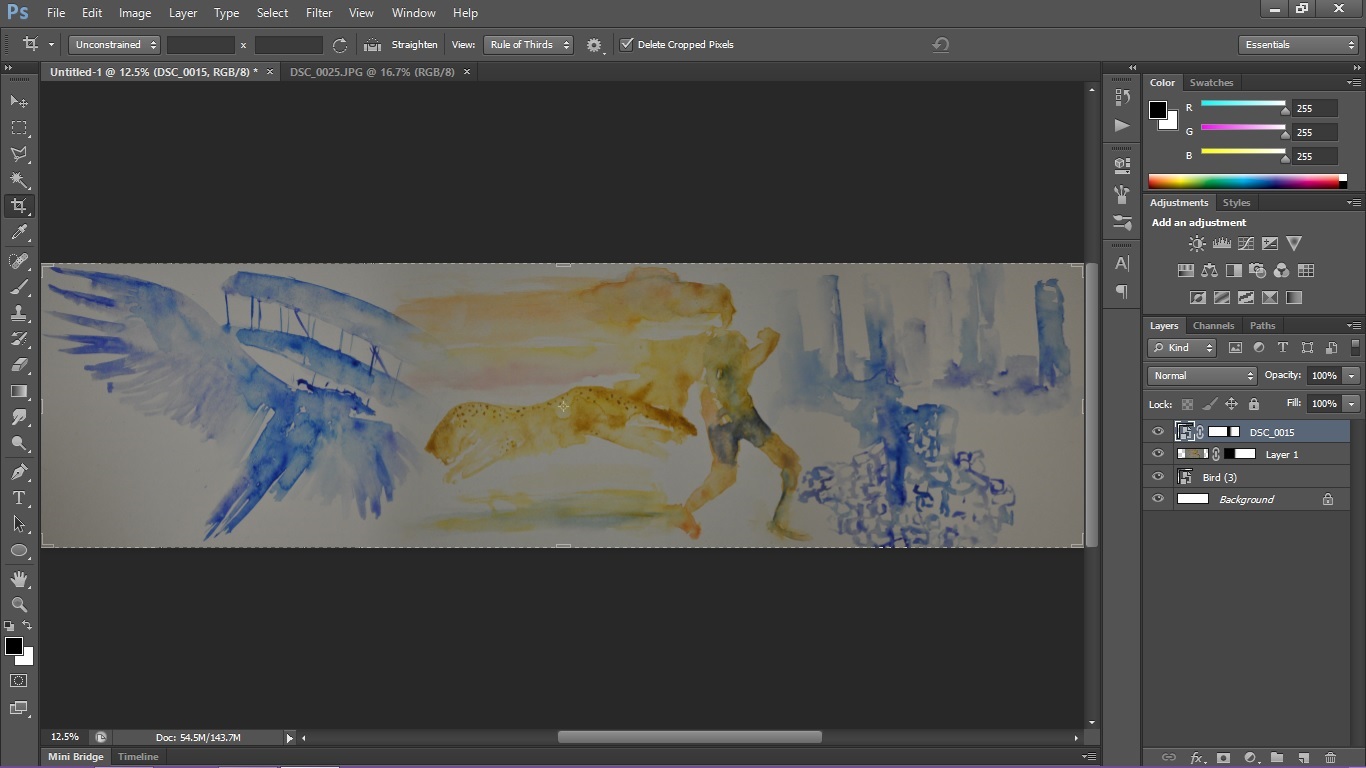Nature has inspired and keeps on inspiring innovations with a title of biomimicry, and I feel that it is important that everyone understands how important nature is as part of the future of innovation.
Here are some initial watercolours inspired by various inventions of biomimicry:
The Wright Brothers invented the plane in 1903 after studying the movement of birds, in particular turkey vultures. This phenomenon has enhanced transport centuries later, all studied from the movement of birds in nature.
 |
| The Wright Brothers invented the plane after being inspired by a turkey vulture. |
The 'Flex-Foot' was invented by Van Phillips in 1984 after he lost his foot in an accident at just 21 years old. Today, the 'Flex-Foot' is used by 90% of Paralympian athletes therefore I have illustrated this innovation in watercolour as a 'celebration' of biomimicry.
 |
Van Phillips invented the 'Flex-Foot' after being inspired by the hind legs of a cheetah. |
The Eastgate Centre in Harare, Zimbabwe was designed by architect, Mick Pearce after being inspired by termite mounds which use a complex ventilation system, enabling natural air conditioning and heating of buildings without installing costly systems.
 |
| Mick Pearce inspired by termite mounds for his design of the Eastgate Centre, Zimbabwe. |
After showing these illustrations at my formative assessment, the tutor, Christian Lloyd, suggesting that they could be a lot more abstract and less literal to become more effective as stand alone pieces. It was also suggested that I look at some more watercolour artists to gain inspiration and knowledge about current trends in watercolour illustration.
Photoshop Manipulation
Putting the cheetah/ paralympian watercolour image in Photoshop allowed me to define the line and brighten the tones to make it stand out more. However, manipulating the image this much has made the watercolour lose its subtle edges and blending of tones.

Using Photoshop, I was able to create a larger image with a mixture of all 3 images. To create this, I used the layer mask tool so I could overlay a gradient over the layers to make them blend into each other. This could be used as a mural in the 3M Buckley Innovation Centre, printed on a large scale and placed on the wall as a mural sticker so the watercolour wouldn't lose its subtlety.

















